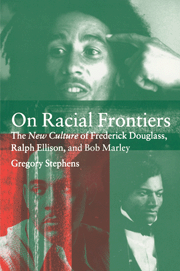Meeting the Needs of Multiethnic and Multiracial Children in Schools
Merrill an imprint of Pearson
2003-10-23
256 pages
ISBN-10: 0205376088
ISBN-13: 9780205376087
Francis Wardle
Red Rocks Community College, Colorado
Maria I. Cruz-Janzen, Associate Professor of Multicultural Education
Florida Atlantic University

From one of the premiere experts on the subject comes this “crash course” for teachers on understanding the developmental needs of multiethnic, multicultural, and multiracial children.
This book educates teachers through the experiences of children culturally, ethnically, and racially mixed heritage. In doing so, the authors challenge even longtime multicultural experts to broaden how we think and approach multicultural education. Wardle and Cruz-Janzen push the envelope of typical awareness. They are the harbingers of questions and information in a changing climate of race and culture ripe for redress and new ways of thinking, talking, and educating.
Both of these authors bring to this topic a wealth of personal experience and academic scholarship and insight. They courageously embrace new ideas and concepts of race and culture, both nationally and globally, and provide new and exciting ways of thinking, talking, learning and educating.
Features
- Authors encourage the reader to critically think about diverse family constellations and individual racial and ethnic identity.
- Different models of multiracial identity development are reviewed.
- Focus Questions at the beginning of each chapter help give students direction.
- A variety of tools are provided to help students critically examine their own perceptions, and to evaluate materials, curricular approaches, and instructional methods.
Author Bios
Francis Wardle first became involved in issues regarding multiethnic and multiracial children when his four-year-old daughter came to him in tears, after a peer used race as a put down. Since then he has created the Center for the Study of Biracial Children, given presentations on multiethnic and multiracial issues throughout the US and Canada, written extensively on the topic, and been quoted in newspapers, magazines, TV programs, and radio stations including NPR. Currently Dr. Wardle teaches at Red Rocks Community College and the University of Phoenix/Colorado Campus, consults for the National Head Start Migrant Program, and writes for a variety of national publications.
Marta I. Cruz-Janzen is Associate Professor of Multicultural Education at Florida Atlantic University. She received a Ph.D. in Curriculum & Instruction from the University of Denver, a Master of Arts and Master of Education in Human Development from Columbia University Teachers College, and a Bachelor of Science from Cornell University. Her dissertation, Curriculum and the Self-Concept of Biethnic and Biracial Persons received the University of Denver Phi Delta Kappa 1996-97 Dissertation of the Year Award. Marta has been a bilingual teacher and elementary school principal.
Table of Contents
- Multiethnic and Multiracial Children.
- Multiethnic and Multiracial Children in Our Schools.
- Myths and Realities.
- Chapter Feature: Eva.
- Diversity in the Classroom.
- Bill of Rights for Racially Mixed People.
- Needs of Multiethnic and Multiracial Children.
- Development of Racial and Ethnic Identity.
- Student Profile.
- Supporting Multiethnic and Multiracial Children.
- Traditional Approaches.
- Single Race-Ethnicity Approach.
- Avoid Diversity by Celebration.
- Student Profile.
- Multicultural Education.
- Group Membership.
- Getting on the Same Page.
- Approaches to Multicultural Education.
- Banks’ Dimensions of Multicultural Education.
- Banks’ Approaches to Multicultural Education.
- Reforming Multicultural Education.
- Historical Developments.
- Student Profile.
- Development of a Racial System.
- Origins of U.S. Racism.
- Rejection of Racial Mixing.
- Latinos.
- Student Profile.
- Immigration.
- Racism and Segregation.
- Desegregation in Education.
- Categorizing People.
- Student Voices.
- Understanding Race, Racism and Categorizing People.
- Not Quite White: The Arab American Experience.
- The Ethnic Category.
- The Race Myth.
- After the Civil War.
- How Other Nations Categorize People.
- The Legacy of Slaves and Slave Owners.
- Maintaining the Color Line.
- Today’s Multicultural and Multiethnic Children.
- Identify Development of Multiethnic and Multiracial Children.
- Identity Development.
- Identity Development Models.
- Chart Showing the Identity Models.
- Developmental and Ecological Model of Identity Development.
- Student Voices.
- Diagram of the Ecological Components of the Multiethnic/Multiracial Identity Model.
- Families and Communities.
- The Multiethnic and Multiracial Family.
- Myths and Realities.
- Table of Age-Related Issues for Interracial and Interethnic Families.
- Raising Healthy, Happy Interracial Children.
- Different Family Structures.
- Curricular Approaches.
- Early Childhood.
- Student Voices.
- Late Elementary.
- Student Voices.
- How to Evaluate a Textbook/Reading Book for P-12 Programs.
- Middle School.
- Student Voices.
- Multicultural School Activities.
- High School.
- Student Voices.
- Comments About Interracial Marriage and Multiracial Identity by Frederick Douglass and Bob Marley.
- Hidden Curriculum.
- Multicultural Model.
- Anti-Bias and Ecological Model of Multicultural Education.
- Case Study of the Anti-Bias and Ecological Model.
- Instructional Strategies.
- The Impact of Standards on Instruction.
- The Influence of the Teacher.
- Student Voices.
- Materials and Activities Checklist.
- Biased Instructional Materials.
- Culturally Authentic Bias.
- Suggestions for Instructional Techniques.
- Analysis of a Teaching Unit.
- Multicultural Music and Dance.
- Teaching Teachers.
- The Nature of Public Education.
- Preparing Future Teachers.
- Teacher Preparation Programs.
- Student Voices.
- Sociopolitical Construction of Multiethnic and Multiracial Persons.
- What Teachers Must Know and Be Able to Do.
- Twenty-Five Recommendations for Teacher Education and Educational Leadership Faculty, Pre-Service Teacher Candidates, and Participate in Teacher In-Service.

